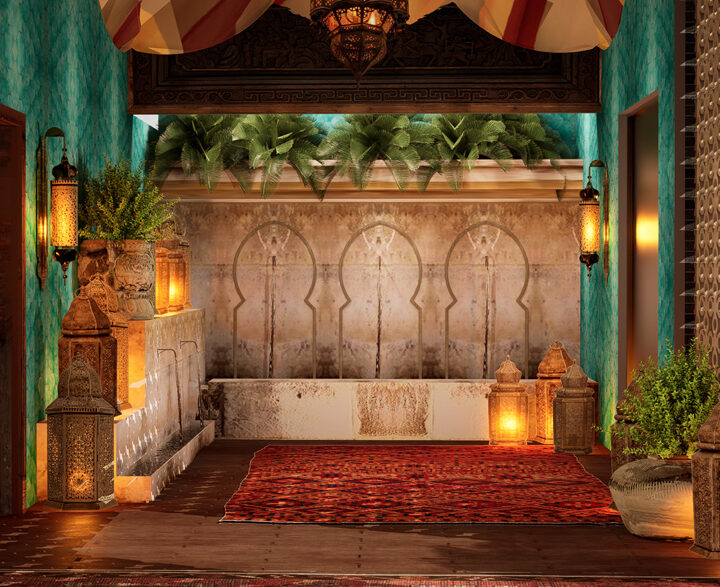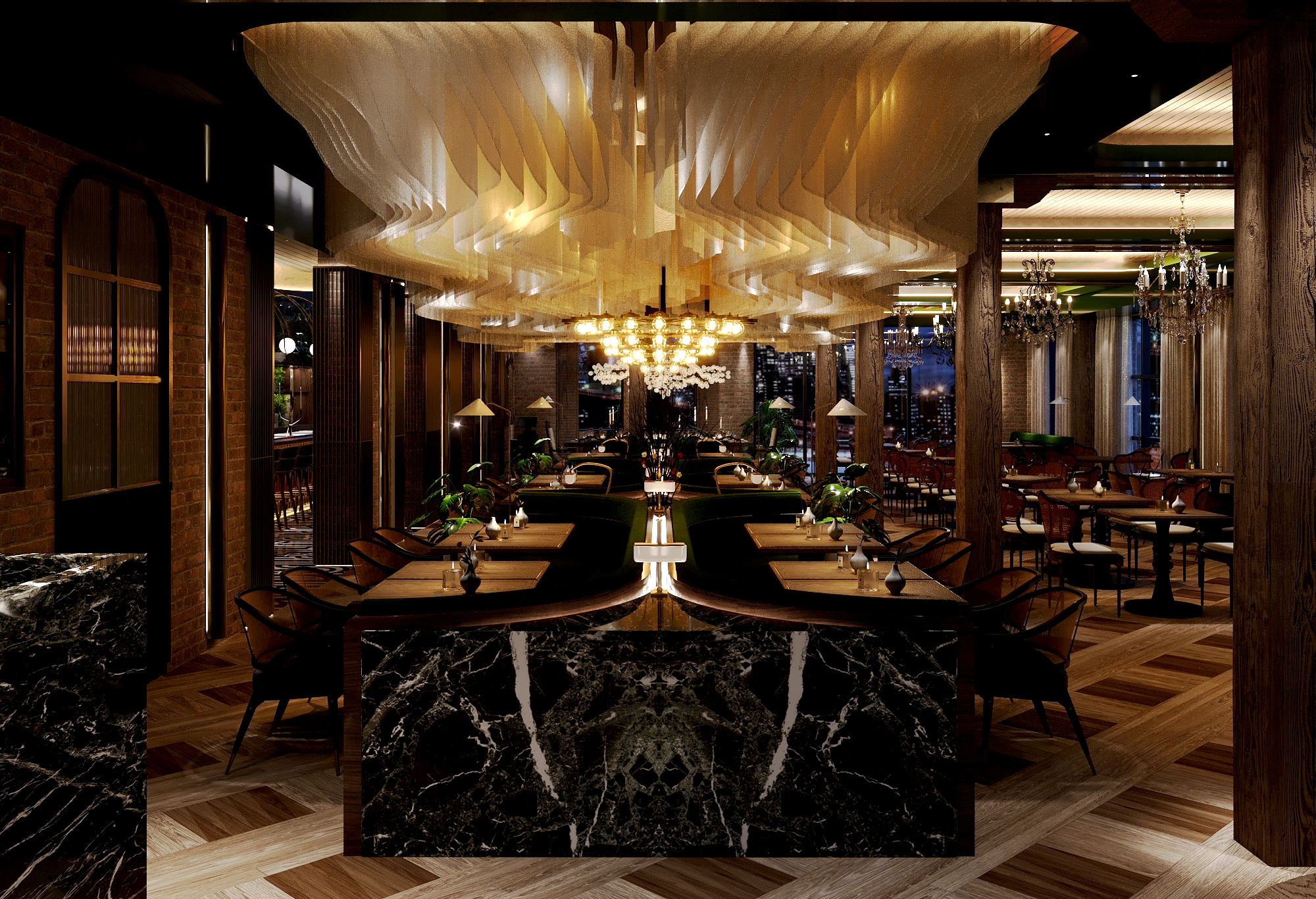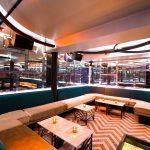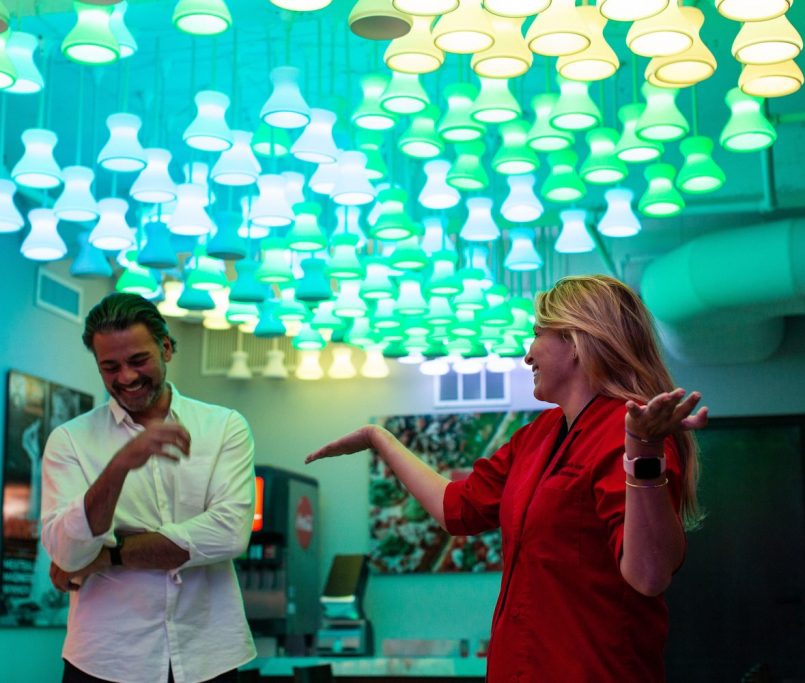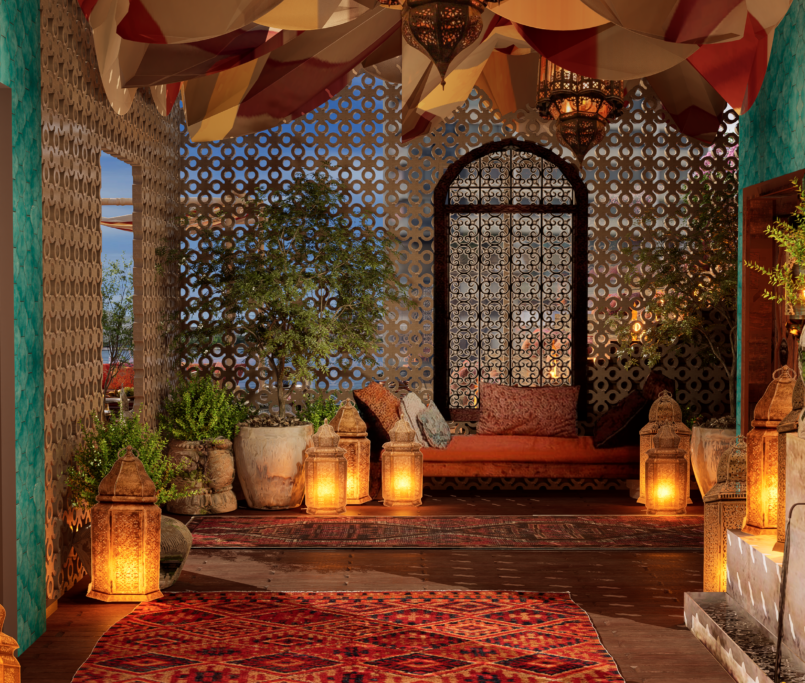Key Concepts in Restaurant Interior Design
In the world of fine dining, it’s not just the food that matters; it’s the entire experience. Interior design plays a pivotal role in creating the ambiance that complements the restaurant experience. From the layout that guides customer flow to the intricate details that tell a story, every aspect is meticulously curated to enhance the diner’s enjoyment. In this article, we’ll explore key restaurant interior design ideas that transform mere spaces into memorable havens. Consider these key concepts.
Psychology of Space
As far as restaurant interior design ideas and concepts go, the psychology of space is perhaps the most botched element. The layout of a restaurant holds the power to influence how patrons interact with the space. Open layouts tend to encourage socializing, while cozy arrangements foster intimate conversations. This careful balance between openness and intimacy can significantly impact customer satisfaction. Colors, too, play a role in evoking emotions. The color psychology behind restaurant interior design is undeniable; warm tones can stimulate appetite, while cooler shades induce relaxation. A well-thought-out color scheme can subconsciously enhance the overall dining experience.
The Role of Lighting
Lighting is the unsung hero of interior design. The interplay between natural and artificial light sets the tone for the entire space. Harnessing the warmth of natural light can create a welcoming atmosphere during the day, while artfully placed artificial lights illuminate key focal points as the night sets in. Lighting doesn’t just serve a functional purpose; it also sets the mood. Dim lighting can create an intimate ambiance for romantic dinners, while vibrant lighting can turn a space into a lively social hub.
Furniture and Seating
The furniture and seating arrangements in a restaurant are more than just functional; they contribute to the overall aesthetics. Comfort should never be compromised, but it can coexist with a tasteful design. Ergonomic seating ensures that diners can enjoy their meals without discomfort, while unique furniture pieces become conversation starters themselves. Adaptable layouts are crucial in today’s dynamic dining landscape. Restaurants must cater to large groups, solitary diners, and special events, all while maintaining a cohesive design.
Cultural and Historical Touches
Restaurant interior design offers an opportunity to celebrate local heritage and culture. By incorporating traditional art, crafts, and design elements, restaurants can create a sense of authenticity that resonates with diners. Additionally, modern interpretations of historical themes provide a fresh twist, bridging the gap between the past and the present. Blending cultural references with contemporary minimalism can result in spaces that are both timeless and trendy.
Acoustics and Atmosphere
While often overlooked, acoustics play a pivotal role in creating a comfortable dining atmosphere. Acoustic panels strategically placed can absorb excess noise, making conversations more enjoyable. The choice of music and its volume contributes to the overall vibe; it can set the pace of dining, whether it’s a leisurely brunch or an energetic dinner service. Designing for intimate conversations while also fostering an energetic social buzz requires a delicate balance.
Sustainability and Green Design
As environmental consciousness grows, so does the importance of sustainable interior design. Using recycled and eco-friendly materials not only benefits the planet but also adds an aesthetic appeal. The inclusion of indoor plants and biophilic design elements brings a touch of nature indoors, creating a refreshing and inviting atmosphere. “Green” design can also become a powerful way to communicate values, attracting environmentally conscious diners.
Evolution of Open Kitchens
The concept of an open kitchen is one of the more recently trending restaurant interior design ideas as of late. It’s more than just a functional layout; it’s a theatrical experience. Showcasing chefs as performers adds an element of excitement to dining. Transparency in food preparation builds trust with customers and adds a layer of authenticity to the dining experience. However, managing the associated challenges of heat, smoke, and aromas requires careful design and engineering.
Integration of Technology
In this digital age, technology is seamlessly integrated into restaurant design. Interactive menu displays and augmented reality experiences enhance customer engagement. However, it’s essential to strike a balance between tech and tradition. While tech can streamline processes and add an element of novelty, it should never replace the human touch that makes dining experiences truly memorable.
Restaurant interior design is a multifaceted art that transforms spaces into immersive experiences. From the psychology of space to the integration of technology, each concept plays a crucial role in shaping the ambiance and enhancing the dining journey. A harmonious blend of comfort, aesthetics, and functionality creates spaces where stories unfold, conversations flourish, and memories are made.
Need Help Bringing Your Restaurant Interior Design Ideas to Life?
If you’d like to speak to our restaurant interior designer, Contact us today at 212-216-9783 for a free restaurant design consultation.




